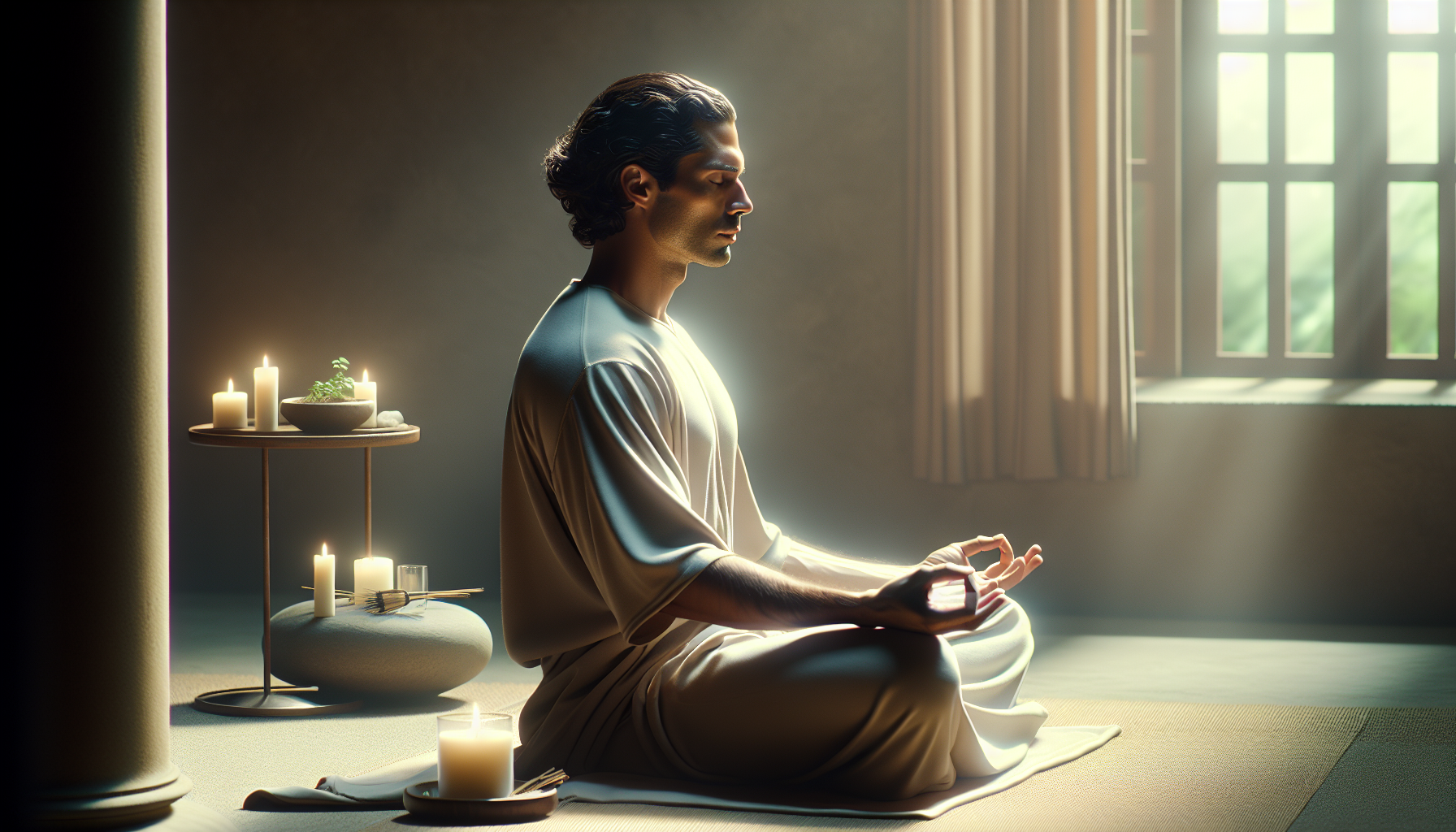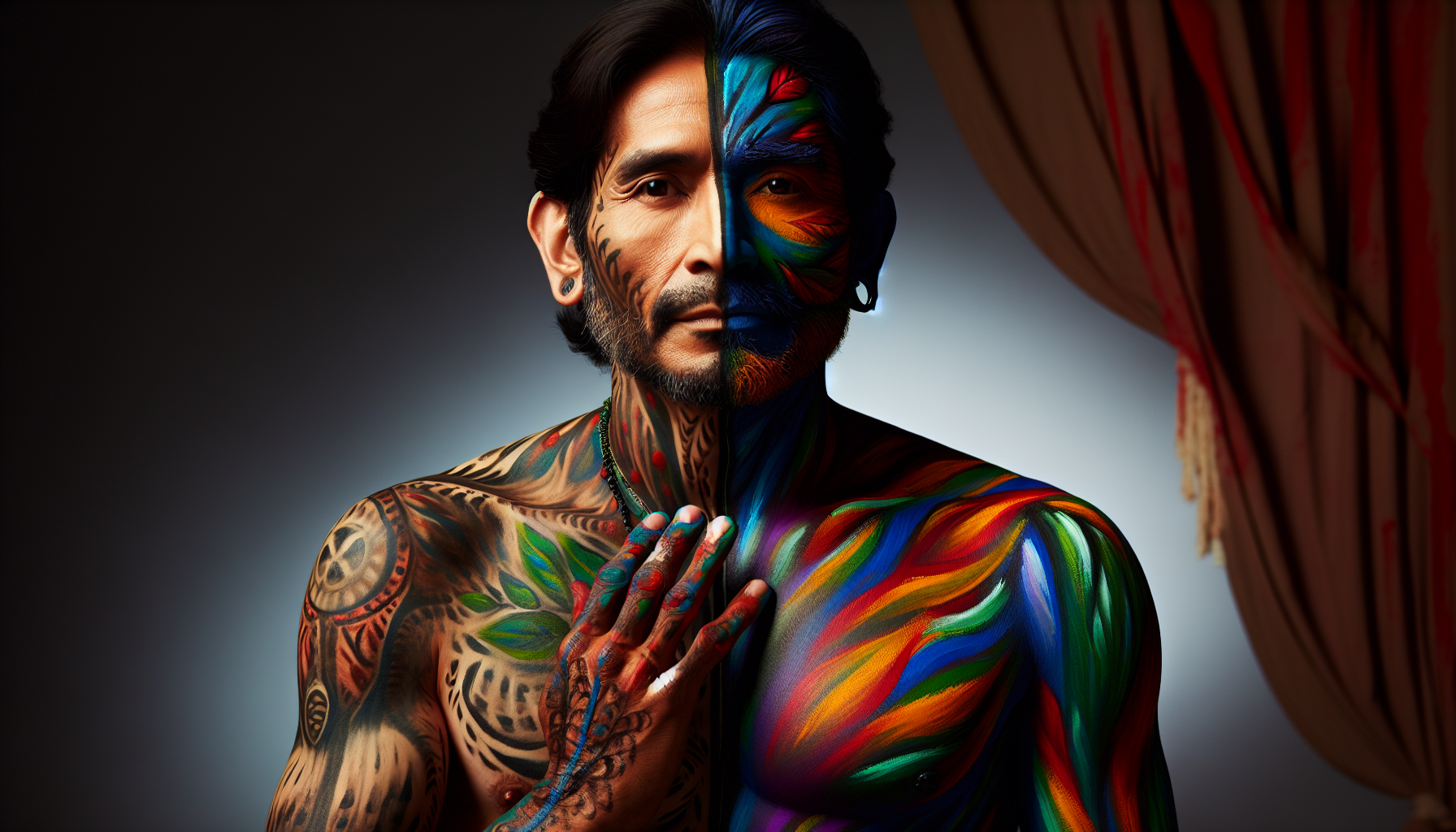In a world that often feels like it’s spinning faster than ever, where stress and frustration can seem like unwelcome companions on our daily journey, learning how to master our emotions is becoming an essential skill. Emotions are the colorful palette of the human experience, painting our lives with shades of joy, sorrow, excitement, and sometimes, intense rage. While all emotions have their place, unchecked anger can become a destructive force, impacting our relationships, our health, and our overall well-being. But what if we could learn to harness this intense energy, channel it into something constructive, and transform our lives in the process? This is where the power of symbolic tools comes into play, offering us unique and effective methods to control our rage and live more balanced lives.
Imagine being able to calm the storm within, not by suppressing your feelings but by understanding and navigating them with grace and insight. The concept of using symbolic tools—objects, rituals, or practices imbued with personal meaning—allows us to do just that. These tools act as bridges between our conscious and subconscious minds, offering us new ways to interpret and influence our emotional responses. From ancient practices to modern psychological techniques, symbolic tools have been used throughout history to help individuals manage their emotions, offering a path to emotional mastery that is both profound and accessible.
In this article, we’ll explore how these symbolic tools can be integrated into our daily lives to help control rage and other intense emotions. We’ll delve into various techniques, such as visualization, journaling, and the use of talismans, to uncover how these methods can bring about a deeper understanding of ourselves and our emotional triggers. We’ll discuss the psychological principles behind these tools, providing insights into why they are effective and how they can be personalized to suit individual needs. Additionally, we will share inspiring stories of individuals who have successfully transformed their lives by mastering their emotions, offering practical advice and encouragement for those seeking to embark on a similar journey.
By the end of this exploration, you’ll have a comprehensive understanding of how symbolic tools can empower you to take control of your emotional landscape. You’ll discover practical strategies that you can implement immediately to start seeing changes in how you handle anger and frustration. Whether you’re looking to improve your relationships, enhance your mental health, or simply find more peace in your day-to-day life, mastering your emotions through the power of symbolic tools is a transformative journey worth undertaking. Join us as we dive deep into this fascinating and empowering subject, and take the first step towards mastering your emotions and reclaiming control over your life.
Understanding the Origins of Rage
Rage is a powerful and often destructive emotion that can manifest in various ways, from intense verbal arguments to physical altercations. Understanding the roots of rage is essential in learning how to manage it effectively. At its core, rage is a response to perceived threats, injustices, or frustrations, often stemming from unmet needs or desires. When these feelings accumulate without resolution, they can trigger an explosive reaction.
Several psychological theories attempt to explain the origins of rage. The psychoanalytic perspective, for instance, suggests that rage is a manifestation of repressed emotions, often linked to unresolved childhood conflicts. On the other hand, cognitive-behavioral theory posits that rage is a learned response, shaped by past experiences and reinforced by environmental factors. Understanding these theories can provide insight into why certain situations provoke rage and how to address the underlying issues.
Biologically, rage is linked to the fight-or-flight response, a survival mechanism that prepares the body to either confront or flee from a threat. This response is orchestrated by the amygdala, a small, almond-shaped structure in the brain that processes emotions. When triggered, the amygdala sends signals to the hypothalamus, prompting the release of stress hormones like adrenaline and cortisol. These hormones increase heart rate, blood pressure, and energy levels, priming the body for action. However, in modern society, where physical threats are less common, this response can lead to inappropriate and harmful expressions of rage.
To effectively manage rage, it is crucial to identify its triggers and underlying causes. Common triggers include feelings of injustice, disrespect, or frustration, as well as perceived threats to one’s self-esteem or sense of control. By recognizing these triggers, individuals can develop strategies to cope with them more constructively, such as through symbolic tools that allow for emotional expression and regulation.
Symbolic Tools for Emotional Regulation
Symbolic tools are powerful aids in managing emotions, particularly rage. These tools act as intermediaries, allowing individuals to express and process their feelings in a controlled and non-destructive manner. Art therapy, for instance, is a well-established method that utilizes creative expression to explore and release pent-up emotions. By engaging in activities like painting or sculpting, individuals can gain insight into their emotional states and work through complex feelings in a safe environment.
Similarly, writing can serve as a symbolic tool for emotional regulation. Keeping a journal allows individuals to articulate their thoughts and feelings, providing clarity and perspective on challenging situations. Writing can also help identify patterns or triggers of rage, enabling individuals to develop more effective coping strategies. By externalizing emotions through words, individuals can gain a sense of control over their emotional experiences and reduce the intensity of their rage.
Physical activities, such as martial arts or yoga, can also function as symbolic tools for managing rage. These practices offer structured outlets for releasing energy and tension, while promoting mindfulness and self-awareness. Martial arts, for example, teach discipline and control, allowing individuals to channel their aggression in a positive and constructive way. Yoga, on the other hand, emphasizes relaxation and deep breathing, helping to calm the mind and body. Engaging in these activities regularly can enhance emotional regulation and reduce the frequency and intensity of rage episodes.
Check out this insightful video on how art therapy can help manage emotions: Art Therapy: Healing through Creativity – Channel Name. 🎨
Comparative Analysis of Symbolic Tools
Symbolic tools for emotional regulation can be compared in terms of accessibility, effectiveness, and applicability to different individuals. While each tool has its unique benefits, understanding these aspects can help determine which method is best suited for managing rage.
| Symbolic Tool | Accessibility | Effectiveness | Applicability |
|---|---|---|---|
| Art Therapy | Moderate – requires materials and space | High – effective for those who enjoy creative expression | Best for individuals comfortable with artistic activities |
| Journaling | High – minimal materials needed | Moderate to High – depends on willingness to introspect | Accessible to most individuals with basic writing skills |
| Martial Arts | Moderate – requires access to classes or training | High – effective for channeling physical energy | Suitable for those interested in physical activity |
| Yoga | High – can be practiced at home or in classes | Moderate to High – promotes relaxation and mindfulness | Accessible to most, regardless of physical ability |
For those interested in incorporating these tools into their lives, it’s important to consider personal preferences, lifestyle, and the specific triggers of their rage. Experimenting with different methods can lead to the discovery of the most effective tool for individual needs.
Implementing Symbolic Tools in Daily Life
Once the most suitable symbolic tools for managing rage have been identified, the next step is to integrate them into daily life. Consistency is key to reaping the benefits of these practices. Setting aside dedicated time each day for activities like journaling, art, or physical exercise can help create a routine that supports emotional well-being.
For instance, starting the day with a morning journaling session can provide clarity and focus, allowing individuals to set intentions and address any lingering emotional concerns. Similarly, incorporating art therapy sessions into a weekly schedule can serve as a creative outlet for processing emotions. Participating in regular martial arts classes or yoga sessions can also promote physical and emotional balance, helping to reduce the buildup of stress and frustration.
Incorporating these tools into daily life may require some adjustments and commitment, but the long-term benefits of improved emotional regulation and reduced rage are well worth the effort. By making these practices a regular part of one’s routine, individuals can cultivate a greater sense of control over their emotions and enhance their overall quality of life.
- Dedicate time each day for journaling or art therapy.
- Join a local martial arts class or practice yoga at home.
- Experiment with different symbolic tools to find the most effective method for managing rage.

Conclusion
Certainly! Here’s a conclusion that fits your requirements:
—
In conclusion, mastering our emotions, particularly anger, is an invaluable skill that can significantly enhance our personal and professional lives. Throughout this article, we’ve delved into the transformative potential of symbolic tools and strategies to manage rage effectively. By understanding the triggers and underlying causes of our anger, we can begin to address it constructively, rather than letting it control us.
One of the central themes we’ve explored is the importance of self-awareness. Recognizing the early signs of anger allows us to intervene before it escalates. Symbolic tools, such as visualization techniques, can be instrumental in this process, helping us redirect our energy into more positive outlets. Furthermore, adopting practices like mindfulness and meditation can provide a foundation of calmness and clarity, empowering us to respond rather than react in heated moments.
The role of communication was another pivotal point discussed. Effective communication not only helps in expressing our feelings but also in understanding others better, fostering healthier relationships. Techniques such as active listening and non-verbal communication can significantly reduce misunderstandings and conflicts, creating a more harmonious environment.
Additionally, the article highlighted the significance of a supportive community. Whether through professional counseling, support groups, or simply a circle of friends and family, having a network to rely on can make a profound difference in how we manage our emotions. Sharing our experiences and learning from others can offer new perspectives and solutions we might not have considered.
It is crucial to remember that controlling our emotions is not about suppression but rather about understanding and channeling them effectively. Embracing this mindset not only improves our mental and emotional health but also sets a positive example for those around us.
The journey to emotional mastery is ongoing and requires patience and practice. However, the rewards are well worth the effort. By harnessing the power of symbolic tools and strategies, we not only improve our own lives but also contribute to a more understanding and compassionate world 🌍.
I encourage you to reflect on the insights shared in this article and consider how you might apply them in your daily life. Your experiences and perspectives are invaluable, so please share them in the comments below. Engaging in this dialogue not only enriches our understanding but also inspires others who might be on a similar journey. Feel free to share this article with anyone who might benefit from these insights. Together, we can cultivate a more emotionally intelligent society.
For those interested in further exploration of this topic, here are some active resources:
– Mindfulness-Based Stress Reduction
– American Psychological Association – Anger Management
– Harvard Health – Understanding the Purpose of Anger
Thank you for taking the time to read and engage with this important subject. Your commitment to mastering your emotions is a step toward a more fulfilling and balanced life. Keep striving for growth, and remember, every step counts on this empowering journey. 🌟
—
Feel free to customize this conclusion further to better fit your article’s style and tone.
Toni Santos is a visual storyteller and cognitive explorer whose work delves into the mental landscapes of ancient cultures—revealing how different civilizations perceived reality, memory, and meaning long before modern psychology existed. Through symbolic imagery and narrative inquiry, Toni brings to life the divergent ways of thinking that shaped lost worlds.
His creative path is guided by a fascination with non-linear logic, oral cosmologies, and the mythic frameworks that once guided decision-making, emotion, and identity. From memory temples carved in stone to visual languages encoded in textiles, every piece Toni creates reflects the vast cognitive diversity of the human story.
With a foundation in visual design and cultural semiotics, Toni blends analytical depth with artistic expression. His work goes beyond historical reconstruction—it reawakens the embodied, intuitive, and ritual-based intelligence of ancient minds, inviting us to question the assumptions of modern thought.
As the mind behind Vizovex, Toni curates visual studies, essays, and immersive content that explore forgotten epistemologies—ways of knowing that connected people to myth, land, and each other in profoundly different ways.
His work is a tribute to:
The symbolic intelligence of pre-modern cultures
The neural diversity embedded in ancient rituals and storytelling
The deep memory systems that shaped identity and perception
Whether you’re a researcher, an artist, or a seeker of hidden wisdom, Toni invites you to enter a space where cognition is culture, and where the past speaks through signs, cycles, and symbols—one myth, one memory, one mind at a time.





